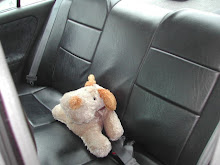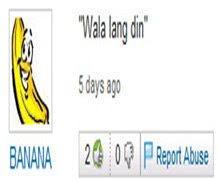Hello World!
China has opened its doors to the world very recently. It welcomes visitors of all kind. But any first time traveler to China will wonder how to endure the trip to the cities of Chengdu, Ningbo, Dongguan, Nanning and even to the bigger cities such as Shanghai, Beijing, Shenzhen, and Guangzhou. While anyone can go around the cities in the west such as NY, LA, Vegas, Paris, Madrid, or London without any need for a guide, this is not the case in China.
How to survive in China is a dilemma for every foreigner whether they are travelers, businessmen, or job seekers. What is there to find in the cities? What kind of food to eat? Can people speak and understand English? Where to go to get help? These are common questions bothering the minds of people who plan to visit China.
Unknown to many, life in China is simple. It is so much simpler than living anywhere in the west. The Chinese are a bunch of friendly people as friendly as anyone else you will find. How to befriend a Chinese is the big question we need to find answer to. Understanding Chinese culture is a prerequisite. We may need to put aside our own sophistication and embrace their way of life. Eat what they eat. If you are from Rome, you can’t be a Roman in China.
Saturday, September 27, 2008
Wednesday, September 24, 2008
Hullabaloos
Another challenge confronts the Chinese authorities recently. Toxic melamine is found on infant milk. According to reports around 53,000 kids had gotten sick.
China has endured a series of scandals in recent years over unsafe products including food, drugs and toys. Many of these products were exported and thus put its manufacturing reputation at stake. Remember Mattel Inc., a leading toy company maker of Barbie, Elmo, Cookie Monsters, and other favorites which recalled million of toys manufactured in China allegedly coated with lead paints.
I was in China when SARS hit the southern province of Guangdong. It was just four years ago when Premier Wen issued an apology and promised greater transparency when official cover-ups aided the spread of SARS from China to the world. And last year after exported pet food, cough medicine, toothpaste and toys made with toxic products sickened and killed pets in North and South America, the government promised to overhaul safety inspection regimes.
The overall impression is of an authoritarian government struggling to enforce its writ on a rapidly developing country where officials and businesses often go their own way noted a foreign observer.
What’s next? We don’t know but we hope for the best.
China has endured a series of scandals in recent years over unsafe products including food, drugs and toys. Many of these products were exported and thus put its manufacturing reputation at stake. Remember Mattel Inc., a leading toy company maker of Barbie, Elmo, Cookie Monsters, and other favorites which recalled million of toys manufactured in China allegedly coated with lead paints.
I was in China when SARS hit the southern province of Guangdong. It was just four years ago when Premier Wen issued an apology and promised greater transparency when official cover-ups aided the spread of SARS from China to the world. And last year after exported pet food, cough medicine, toothpaste and toys made with toxic products sickened and killed pets in North and South America, the government promised to overhaul safety inspection regimes.
The overall impression is of an authoritarian government struggling to enforce its writ on a rapidly developing country where officials and businesses often go their own way noted a foreign observer.
What’s next? We don’t know but we hope for the best.
Labels:
events
Wednesday, September 10, 2008
Chinese Traditions in the 21st Century
I walked to a nearby restaurant with a homegrown Chinese friend the other night. While on our way, we talked about the upcoming Mid-Autumn Festival which is most popularly referred to as Mooncake Festival. My friend shared how he is saddened by the way the occasion is celebrated today. The very essence of the Chinese tradition is lost.
He said the same observation is true for all other Chinese festivities. The Chinese youths do not seem to understand the significance of the celebration. The day is simply looked upon as a holiday that frees them from school and work and thus they take time out to visit friends and relatives. They would rather celebrate Christmas and Valentine's Day which they find modern and fun than the traditional Chinese festivities.
The Mid-Autumn Festival
This week marked the beginning of the Mid-Autumn Festival. The "Fifteenth of the Eighth Moon". In the Western calendar, the day sometimes fall between the second week of September and the second week of October. Popularly known as "The Mooncake Festival". It is a traditional custom of worshipping the moon and can be traced back from Xia and Shang Dynasties (2000 B.C.-1066 B.C.)
The Mid-Autumn festival remains more subdued compared with other Chinese celebrations. Traditionally, it is celebrated under the moonlight where people eat moon cakes while staring at the moon. The custom has been passed to generations as as symbol of family reunion.
The Spring Festival
Another very important celebration among Chinese is the Spring Festival known to many as the Chinese New Year celebration. It started circa 2000 BC. Emperor Yao lead members of his court and worship heaven and earth. Since then people marked that day as the beginning of the year. The day of the second new moon after the day the winter solstice occur. The beginning of Spring.
The celebration includes a religious ceremony given in honor of Heaven and Earth, the gods of the household, and the family ancestors. The whole family will gather together for the celebration. Firecrackers were set together with red color ornaments to drive a legendary monster Nian. The festival will be ended with the Lantern Festival on the 15th day of the New Year.
He said the same observation is true for all other Chinese festivities. The Chinese youths do not seem to understand the significance of the celebration. The day is simply looked upon as a holiday that frees them from school and work and thus they take time out to visit friends and relatives. They would rather celebrate Christmas and Valentine's Day which they find modern and fun than the traditional Chinese festivities.
The Mid-Autumn Festival
This week marked the beginning of the Mid-Autumn Festival. The "Fifteenth of the Eighth Moon". In the Western calendar, the day sometimes fall between the second week of September and the second week of October. Popularly known as "The Mooncake Festival". It is a traditional custom of worshipping the moon and can be traced back from Xia and Shang Dynasties (2000 B.C.-1066 B.C.)
The Mid-Autumn festival remains more subdued compared with other Chinese celebrations. Traditionally, it is celebrated under the moonlight where people eat moon cakes while staring at the moon. The custom has been passed to generations as as symbol of family reunion.
The Spring Festival
Another very important celebration among Chinese is the Spring Festival known to many as the Chinese New Year celebration. It started circa 2000 BC. Emperor Yao lead members of his court and worship heaven and earth. Since then people marked that day as the beginning of the year. The day of the second new moon after the day the winter solstice occur. The beginning of Spring.
The celebration includes a religious ceremony given in honor of Heaven and Earth, the gods of the household, and the family ancestors. The whole family will gather together for the celebration. Firecrackers were set together with red color ornaments to drive a legendary monster Nian. The festival will be ended with the Lantern Festival on the 15th day of the New Year.
Monday, September 8, 2008
Fancy or real?
It was in the turn of the new millennium when we could see works of arts, fashion accessories, ladies bags, watches, and electronic gadgets at a commercial center found at the border of Hong Kong and Shenzhen. This is a favorite place for foreign travelers and expatriates to shop. It is where they can score some top brand items like Dolce & Gabbana, Louis Vuitton, Prada, Omega, and Ralph Lauren to name a few, with a pair of dollars. Some would think if this is fancy or real.
The combined effort of authorities to crackdown on counterfeits is noteworthy. Today, if we go deeper inside Shenzhen City in the classy shopping malls we shall see the same top brands with tag prices which are a hundred or even a thousand times more than those found at the border. But still some would think if this is fancy or real.
China topped the gold count in the just concluded Beijing Olympics. But the news about the spectacular fireworks display on TV at the opening of the games being pre-recorded tried to overshadow the gold haul of the Chinese athletes. Those who may not have heard or read about the fireworks issue may yet wonder if it was fancy or real. The net, the airwaves, the papers were flooded with criticisms. Some would look at it as but theatrical effects which are common for many big events. More than the Beijing fireworks display the world has far greater controversies in the like of the Lunar landing, the JFK assassination, Iraq’s WMD, the fate of Princess Diana and many others. Are these stories fancy or real?
The combined effort of authorities to crackdown on counterfeits is noteworthy. Today, if we go deeper inside Shenzhen City in the classy shopping malls we shall see the same top brands with tag prices which are a hundred or even a thousand times more than those found at the border. But still some would think if this is fancy or real.
China topped the gold count in the just concluded Beijing Olympics. But the news about the spectacular fireworks display on TV at the opening of the games being pre-recorded tried to overshadow the gold haul of the Chinese athletes. Those who may not have heard or read about the fireworks issue may yet wonder if it was fancy or real. The net, the airwaves, the papers were flooded with criticisms. Some would look at it as but theatrical effects which are common for many big events. More than the Beijing fireworks display the world has far greater controversies in the like of the Lunar landing, the JFK assassination, Iraq’s WMD, the fate of Princess Diana and many others. Are these stories fancy or real?
Labels:
accessories,
shopping
The Dragon has awakened!
I first set foot in South China ten years ago when it just started to convert its landscape from farmlands to factories. Hills were cut to give way to superhighways and industrial parks built over swamp lands. 
When I arrived in this place I expected to see brick houses, folks in their old Chinese costumes, and Kung Fu kids as I saw in Chinese movies. But what struck my view were the countless towering cranes building high rise apartments and offices.
One of the longest suspension bridges (the Xihoumen, 1,650m) crossed one the the longest and widest rivers (the Yangtze). The biggest hydro-electric power was built with the biggest dam (the Three Gorges).
Cities sprouted in the hinterlands!
That same year that signaled my adventure, I found the first McDonald outlet in mainland China at a busy peddle street called Dongmen near the Hong Kong border. This was established in 1990.
The sight of bicycle overcrowded streets amazed me. Locals on the go, the young and not so young and even the ladies in their formal attires. The bicycle was a way of life then. Today, the crowded streets are turned into an eight-lane boulevard. Though bicycles are visibly gone the roads are now flooded with cars and the traffic has remained as heavy as before.
The street shops are transformed into classy shopping centers. Bars, western-type cafes, discos, beerhouses and live bands are all over the place. Modernization happened overnight. While folks hold on to their deep-rooted culture and traditions, they try hard to catch up with modern times. The dragon has awakened!

When I arrived in this place I expected to see brick houses, folks in their old Chinese costumes, and Kung Fu kids as I saw in Chinese movies. But what struck my view were the countless towering cranes building high rise apartments and offices.
One of the longest suspension bridges (the Xihoumen, 1,650m) crossed one the the longest and widest rivers (the Yangtze). The biggest hydro-electric power was built with the biggest dam (the Three Gorges).
Cities sprouted in the hinterlands!
That same year that signaled my adventure, I found the first McDonald outlet in mainland China at a busy peddle street called Dongmen near the Hong Kong border. This was established in 1990.
The sight of bicycle overcrowded streets amazed me. Locals on the go, the young and not so young and even the ladies in their formal attires. The bicycle was a way of life then. Today, the crowded streets are turned into an eight-lane boulevard. Though bicycles are visibly gone the roads are now flooded with cars and the traffic has remained as heavy as before.
The street shops are transformed into classy shopping centers. Bars, western-type cafes, discos, beerhouses and live bands are all over the place. Modernization happened overnight. While folks hold on to their deep-rooted culture and traditions, they try hard to catch up with modern times. The dragon has awakened!
Subscribe to:
Posts (Atom)



